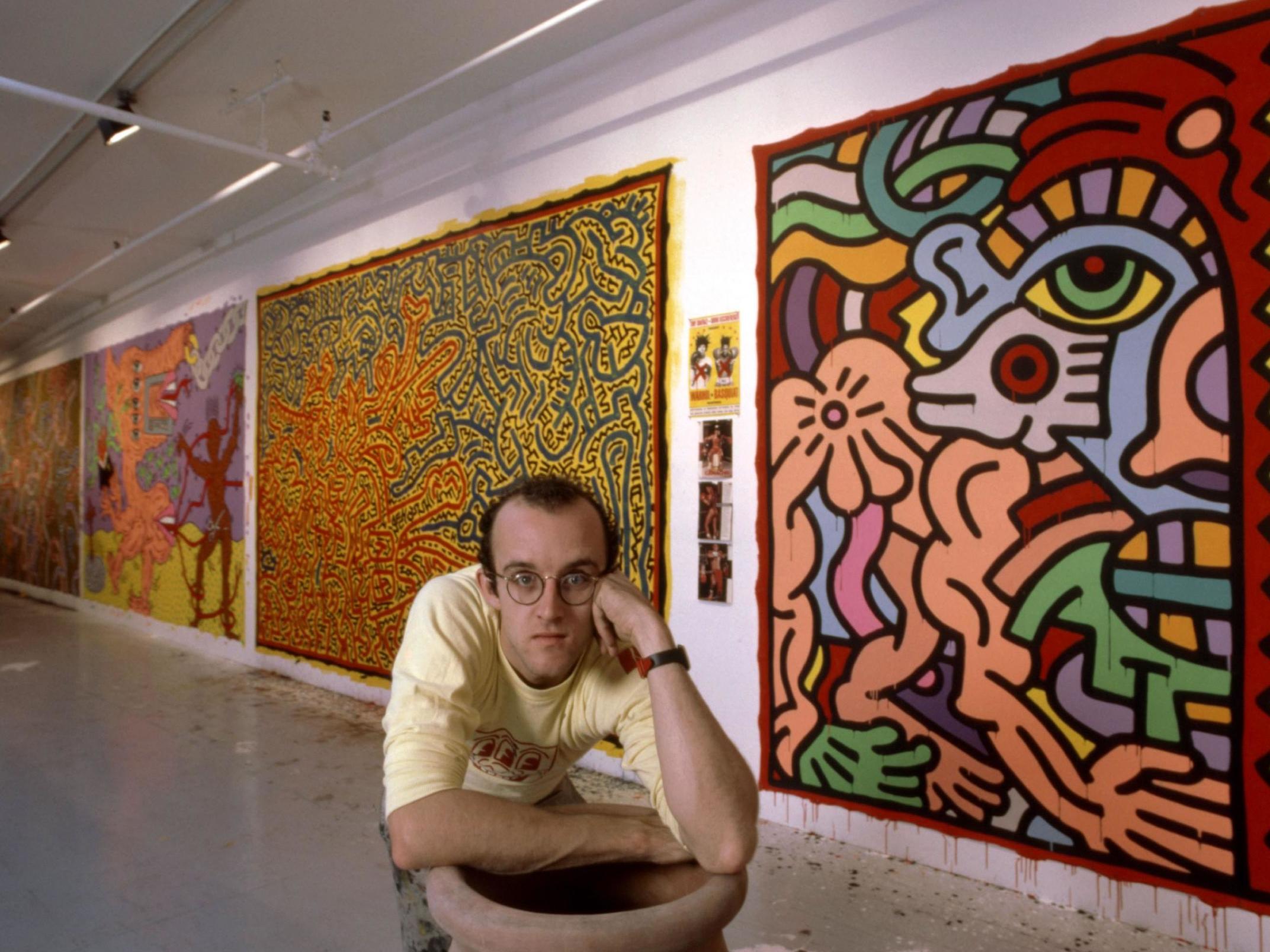Keith Haring’s Artistic Style and its Influence on the Rocking Chair Design Concept

Keith Haring’s bold, graphic style, characterized by its vibrant colors, simplified figures, and powerful lines, lends itself remarkably well to three-dimensional design applications. The inherent energy and playful nature of his work translate effortlessly into a functional piece like a rocking chair, creating a unique and engaging piece of furniture. The translation of Haring’s iconic imagery onto a rocking chair necessitates a careful consideration of both the artistic integrity of his style and the ergonomic requirements of the chair itself.
Incorporation of Haring’s Motifs into Rocking Chair Design
Haring’s repertoire of recurring motifs, including radiant babies, playful dogs, and iconic hearts, offers a wealth of possibilities for the rocking chair’s aesthetic. These motifs could be incorporated through various techniques, such as painting, inlay, or even three-dimensional sculpted elements affixed to the chair’s surface. For example, the chair’s backrest could feature a large-scale rendering of one of Haring’s iconic figures, while the armrests might be adorned with smaller, repeating motifs like hearts or dogs. The overall effect would be a harmonious blend of functionality and artistic expression. The rhythmic nature of the rocking motion could even be metaphorically linked to the rhythmic repetition of elements found in many of Haring’s works.
Material Selection for a Keith Haring Rocking Chair
The choice of materials significantly impacts the final aesthetic and durability of the rocking chair. Different materials offer varying levels of suitability for translating Haring’s vibrant style and achieving the desired visual effect. The following table compares three materials: wood, metal, and plastic.
| Material | Suitability | Cost | Aesthetic Impact |
|---|---|---|---|
| Wood | Highly suitable for intricate detail and painting; allows for a warm, tactile feel. | Moderate to High (depending on wood type and craftsmanship) | Can effectively capture the bold lines and vibrant colors of Haring’s work, offering a classic and timeless aesthetic. |
| Metal | Suitable for bold, graphic elements; allows for strong lines and structural integrity. | High (due to material cost and fabrication complexity) | Provides a modern and industrial aesthetic, allowing for a striking contrast with Haring’s playful imagery. |
| Plastic | Suitable for mass production and vibrant colors; offers affordability and durability. | Low to Moderate | Can achieve a playful and pop-art aesthetic, but may lack the sophistication and tactile appeal of wood or metal. |
Interpreting the Symbolism of a Keith Haring Rocking Chair
.jpg?mode=max)
A Keith Haring-inspired rocking chair transcends mere functionality; it becomes a tangible embodiment of his artistic philosophy, inviting reflection on themes central to his oeuvre. The inherent symbolism of the chair itself, traditionally associated with comfort, relaxation, and the cyclical rhythm of childhood, is profoundly enriched by the integration of Haring’s vibrant and iconic imagery. This fusion creates a piece that is both aesthetically striking and conceptually resonant.
The playful energy and bold lines characteristic of Haring’s work naturally lend themselves to the design of a rocking chair. His figures, often depicted in dynamic movement, suggest a sense of joyous energy that complements the back-and-forth motion of the chair. The act of rocking, a repetitive and soothing motion often associated with infancy and a return to simpler times, finds a counterpoint in the vibrancy and intensity of Haring’s imagery, creating a fascinating interplay between tranquility and dynamism. The bold colors and simplified forms of his style can transform a traditional piece of furniture into a statement piece, a celebration of life and movement.
The Interplay of Rocking and Haring’s Imagery
The rhythmic motion of the rocking chair interacts with Haring’s symbolic vocabulary in several ways. The repetitive back-and-forth movement mirrors the cyclical nature of life, echoing the continuous flow of Haring’s figures, which often seem to endlessly repeat and intertwine. This creates a sense of continuous energy and movement, even in the stillness of the chair itself. The act of rocking, often associated with soothing and comforting childhood memories, is juxtaposed with the bold and sometimes confrontational nature of some of Haring’s imagery, creating a complex and engaging piece of art. For instance, a rocking chair featuring Haring’s iconic “radiant baby” could suggest a reflection on the innocence and vulnerability of childhood within a larger context of social and political commentary inherent in Haring’s work.
A Narrative of Interaction
Imagine a young child, perhaps eight years old, tentatively approaching a Keith Haring-inspired rocking chair. The chair’s vibrant colors—a kaleidoscope of blues, yellows, and reds—immediately capture their attention. The bold, simplified figures of dancing humans and playful creatures seem to leap from the painted surface. The child cautiously sits, feeling the smooth curves of the chair beneath them. As they begin to rock, a gentle rhythm takes over, and the child’s imagination takes flight. The figures on the chair seem to dance along with them, their movements echoing the back-and-forth sway. The experience becomes one of playful immersion, a connection to the artist’s vibrant vision, and a sensory exploration of movement, color, and childlike wonder. The act of rocking transforms from a simple physical motion into a symbolic journey through the energetic world of Keith Haring’s art, a space where imagination and play are paramount. The child doesn’t just sit; they participate in a dynamic interplay between the artist’s vision and their own unfolding imagination.
